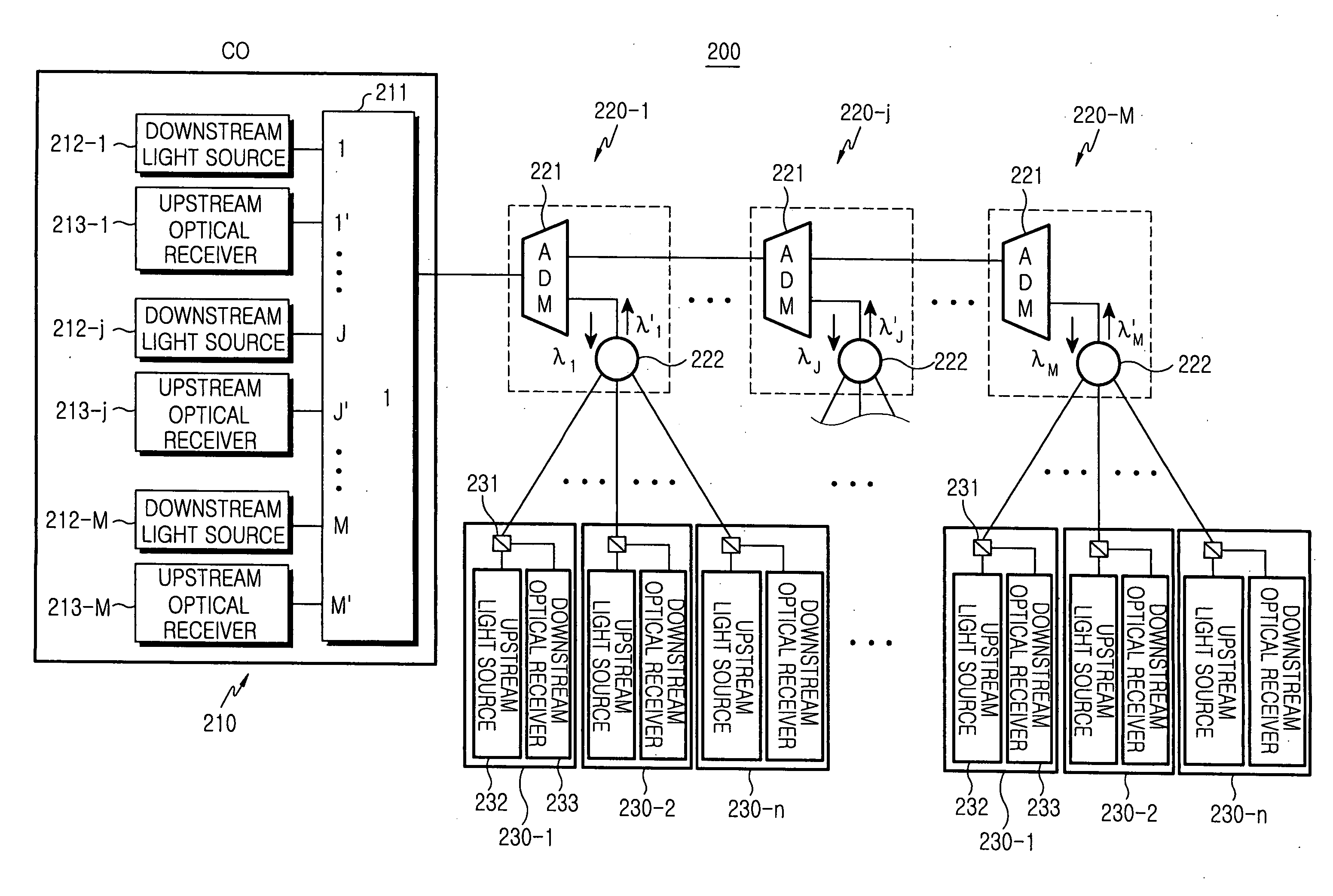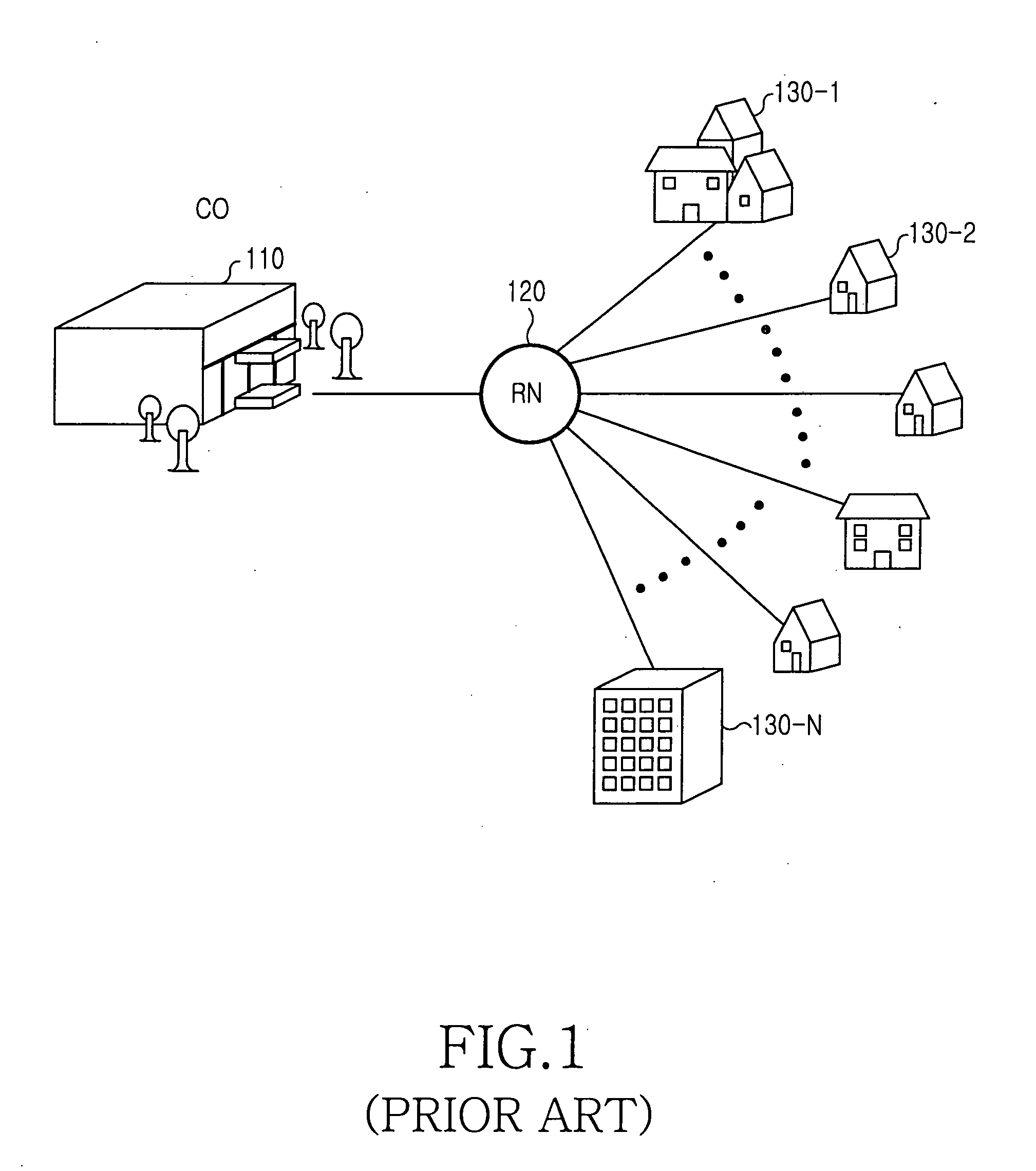Passive optical network of bus structure
a bus structure and optical network technology, applied in the field of passive optical network, can solve the problem that the pon cannot efficiently provide communication services to each subscriber without requiring a significant amount in installation costs, and achieve the effect of safe and economical provision of optical communication services and reducing population density
- Summary
- Abstract
- Description
- Claims
- Application Information
AI Technical Summary
Benefits of technology
Problems solved by technology
Method used
Image
Examples
first embodiment
[0024]FIG. 2 illustrates a passive optical network 200 having a bus-type structure according to the present invention. The passive optical network 200 includes a central office (CO) 210 for generating time-division multiplexed and wavelength-division multiplexed downstream optical signals (λ1 . . . λM), a plurality remote nodes (RNs) 220-1 to 220-M positioned in series on the optical path linked to the CO 210 for splitting corresponding downstream optical signals, and a plurality of optical network units (ONUs) 230-1 to 230-n which are linked with a corresponding one of RNs 220-1 to 220-M. That is, the CO 210 transmits time-division multiplexed and wavelength-division multiplexed downstream optical signals to each of the RNs 220-1 to 220-M. Each of the RNs 220-1 to 220-M splits a downstream optical signal with a corresponding wavelength into a plurality of downstream channels and transmits the downstream channels to the corresponding ONUs 230-1 to 230-n linked with the corresponding...
second embodiment
[0036]FIG. 6 illustrates only an add / drop multiplexer 321-j included in the j-th remote node 320-j of the remote nodes 320-1 to 320-M shown in FIG. 5. The corresponding add / drop multiplexer 321-j extracts a downstream optical signal with a corresponding wavelength (λj) and outputs a corresponding upstream optical signal (λj′) to the CO 310. As shown in FIG. 6, the add / drop multiplexer 321 according to the present invention can extract or add a downstream optical signal and an upstream optical signal with mutually different wavelengths by employing an add / drop filter capable of reflecting the wavelengths through two ports of the add / drop multiplexer 321.
[0037] Each of the downstream optical splitters 322 splits a downstream optical signal with a corresponding wavelength (λ1 . . . λM) into a plurality of downstream channels and transmits the downstream channels to corresponding ONUs 330-1 to 330-n from among a plurality of linked ONUs. Each of the upstream optical splitters 323 time-d...
PUM
 Login to View More
Login to View More Abstract
Description
Claims
Application Information
 Login to View More
Login to View More - R&D
- Intellectual Property
- Life Sciences
- Materials
- Tech Scout
- Unparalleled Data Quality
- Higher Quality Content
- 60% Fewer Hallucinations
Browse by: Latest US Patents, China's latest patents, Technical Efficacy Thesaurus, Application Domain, Technology Topic, Popular Technical Reports.
© 2025 PatSnap. All rights reserved.Legal|Privacy policy|Modern Slavery Act Transparency Statement|Sitemap|About US| Contact US: help@patsnap.com



